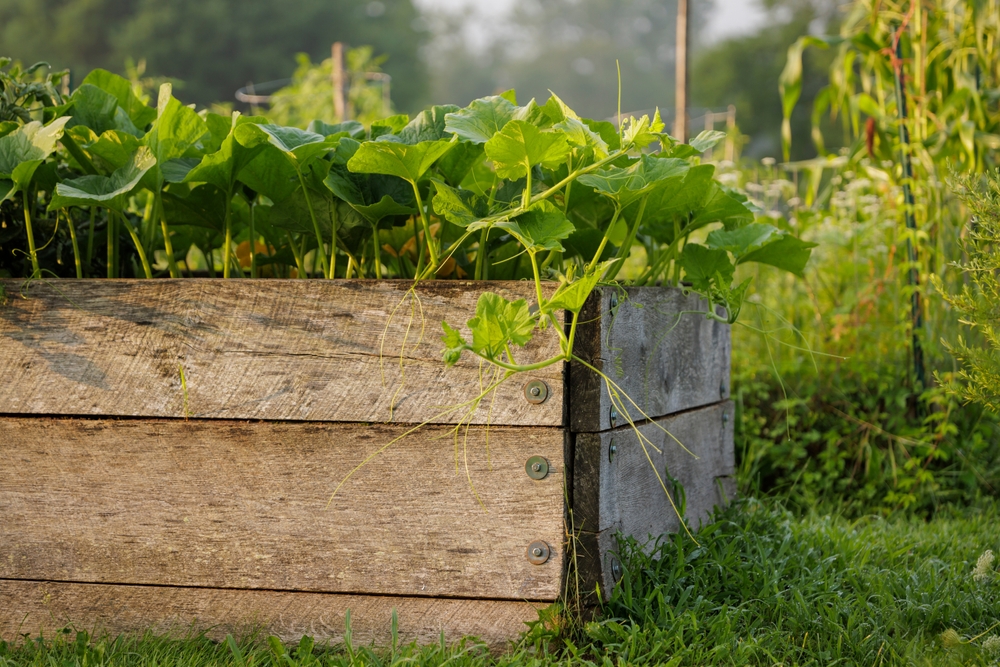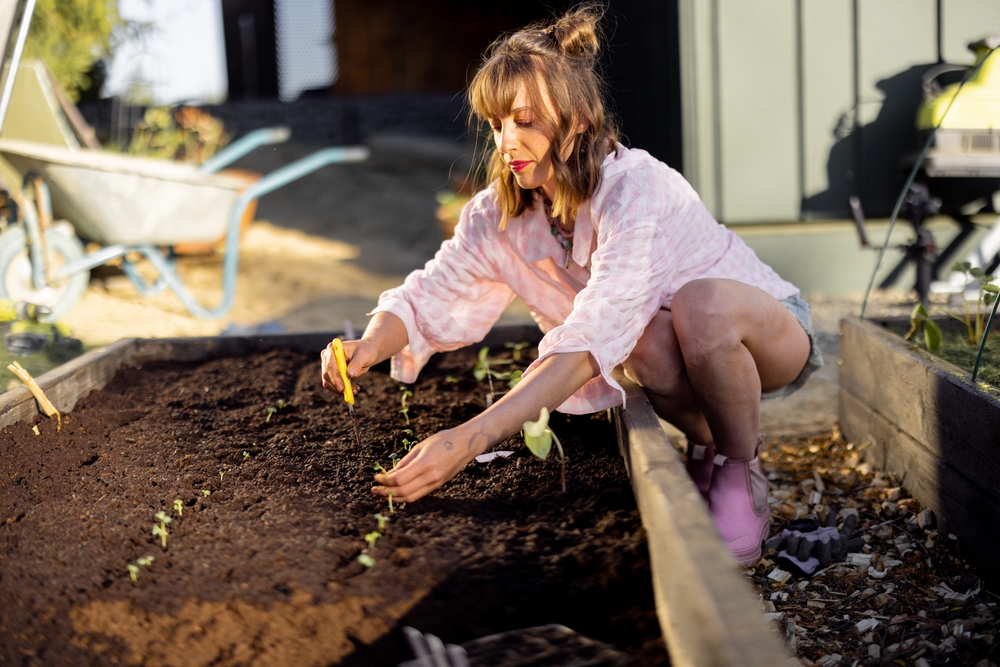
Image Source: Shutterstock.com
As summer slips away and the crisp edge of autumn starts to creep into the air, gardeners everywhere face the same bittersweet truth: the growing season is winding down. But if you’ve got raised garden beds, you might have noticed something magical—your plants aren’t giving up as quickly as those in the ground. The soil stays warmer, the roots stay happy, and your veggies keep thriving long after your neighbor’s garden has gone sleepy.
It’s not just luck or wishful thinking—it’s science. Raised beds are like the cozy sweaters of the gardening world, trapping warmth and keeping your crops snug when the temperature starts to dip.
Elevated Soil, Elevated Warmth
One of the simplest reasons raised beds hold heat longer is their elevation. When soil is lifted above ground level, it’s exposed to more direct sunlight throughout the day. That means more surface area soaking in those precious rays that keep temperatures up even as the nights get chilly. The sides of the bed—especially if made of wood, metal, or stone—also absorb and radiate warmth back into the soil. It’s like wrapping your garden in a gentle, solar-powered blanket that keeps the roots from shivering when the air gets brisk.
Better Drainage Means Drier, Warmer Soil
Here’s something every gardener learns sooner or later: wet soil cools faster than dry soil. Ground-level gardens tend to retain moisture longer, which can make them colder when fall hits. Raised beds, on the other hand, have superior drainage that helps excess water flow away, leaving behind soil that stays warm longer. That drier environment acts as insulation, preventing the cold from sinking in as quickly. The result? Your tomatoes, herbs, and root veggies get a few extra weeks of productivity before the frost sets in.
Materials Matter—And Some Trap Heat Like a Dream
The material your raised bed is made from plays a huge role in how well it retains warmth. Wooden beds hold heat moderately well, especially if treated or lined, while metal ones—like galvanized steel—act like mini heat batteries, absorbing sunlight during the day and releasing it slowly overnight. Stone or brick beds take it to another level, radiating stored heat into the soil like a gentle campfire for your plants. Even the color of the material makes a difference—darker tones absorb more sunlight, while lighter ones reflect it. So, if you’ve ever debated between a cedar frame and a sleek steel one, consider how your local climate might benefit from that extra bit of heat retention.
Air Circulation Creates a Microclimate
Raised beds don’t just sit above ground—they breathe. The air that circulates around them creates a unique microclimate, one that tends to stay warmer than the surrounding area. Because the soil isn’t pressed directly against the cold earth, it cools at a slower rate when temperatures drop. This airflow also helps balance moisture and temperature, keeping conditions more stable overall. Think of it as nature’s way of giving your plants their own insulated apartment while everyone else is shivering in the open field.

Image Source: Shutterstock.com
Sunlight Hits All the Right Angles
In fall, the sun hangs lower in the sky, and that change in angle can make a big difference for gardeners. Raised beds, being elevated, catch more of that lower-angle sunlight during the shorter days. The soil warms faster in the morning and retains heat longer into the evening. This extra bit of sun exposure can keep the top layers of soil several degrees warmer than the surrounding ground. It’s a subtle difference that makes a big impact—especially when you’re trying to squeeze one last harvest out of your lettuce, kale, or carrots.
Insulation from the Ground’s Cold Grip
The earth beneath your feet acts like a giant sponge for cold temperatures as fall deepens. Traditional in-ground gardens lose heat quickly because the surrounding soil sucks that warmth downward. Raised beds, however, are somewhat detached from this cooling effect. Their structure prevents cold from creeping upward as easily, trapping warmth where it matters most—around the root zone. The higher the bed, the more insulation you get from that chilly underground sinkhole of energy loss.
Compost and Organic Matter Keep Things Toasty
Here’s another secret weapon of raised beds: compost. Most raised bed gardeners mix generous amounts of organic matter—like compost, leaves, and mulch—into their soil. As this material breaks down, it actually generates heat, creating a mild thermal boost right inside the bed. That steady, natural warmth keeps roots cozy and promotes microbial activity even as outdoor temperatures fall. It’s the ultimate eco-friendly heater—no electricity required, just good, old-fashioned decomposition doing its thing.
Mulch and Covers Maximize the Effect
Want to supercharge your raised bed’s natural warmth? Add a layer of mulch or a simple cover crop. Mulch acts like a comforter for the soil, trapping the day’s heat and shielding it from chilly nights. Row covers or clear plastic sheeting can amplify the effect, turning your raised bed into a mini greenhouse that traps radiant warmth. Even on frosty mornings, you’ll notice steam rising from the mulch when you pull it back—a sure sign that your garden is staying one step ahead of the cold. With the right combination, you can often extend your harvest by several weeks or even months.
The Psychological Perk: Hope That Outlasts the Season
There’s something undeniably motivating about seeing green life thriving when everyone else’s garden is done for the year. Raised beds don’t just hold heat—they hold hope. They remind you that your growing season isn’t over until you say it is. Watching your late-season spinach or hardy herbs soldier on in that retained warmth is a little victory against the march of winter. And honestly, who doesn’t love outsmarting Mother Nature, even just a little?
Keeping the Glow Alive Longer
Raised beds are more than just trendy garden setups—they’re smart, efficient, and quietly powerful. Their elevated design, improved drainage, and heat-trapping materials create the perfect environment for stretching your growing season into fall. The science behind it might be fascinating, but the real magic is seeing your plants flourish when you thought the season was done. So, if you’ve ever wondered why your raised beds stay warmer while others frost over, now you know—you’ve built the garden equivalent of a warm hug.
Have you noticed your raised beds holding heat longer? Share your experiences, tips, or late-season garden victories in the comments below.
You May Also Like…
Why Raised Beds Hold Warmth Longer Than Ground Soil
7 Easy Raised Bed Fixes for Fall Maintenance
Why Covering Beds Helps Soil Microbes Thrive
Why Certain Plants Emit More Fragrance in Fall
How Crop Residue Feeds Microbes in Autumn
Leave a Reply